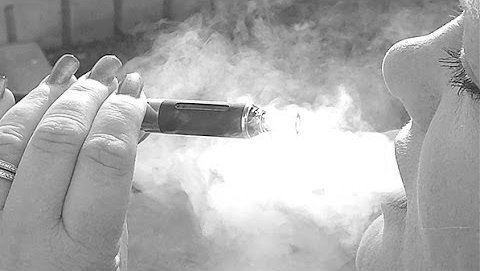
Nicotine dependence diagnostic standards are hidden behind official-looking acronyms such as DSM-IV, FTND, MNWS, M-NRQ, and HONC. These standards claim to measure the onset, existence, or depth of nicotine dependency. But being a little bit addicted is like being a little bit pregnant.
It's normal to want to rationalize that we don't have a problem, or if we do that it's just a "nasty habit," or if not, and we really are addicted, that we're just a little bit addicted, that it's itty-bitty.
It's normal to compare our situation with that of other drug or nicotine addicts, to rationalize that ours isn't nearly as bad.[1]
The easiest such minimization is to compare how often we use nicotine, our brain's level of nicotine tolerance. But let's not kid ourselves. Whether our brain demands a single nicotine fix every third day or twenty times daily, having lost the autonomy to simply turn and walk away, why pretend superiority once a full-fledged addict?
Pretending superiority is a dependency minimization rationalization that helps keep millions trapped behind bars.
Unfortunately, non-daily addicts expect to experience fewer positive effects during recovery, and place less value on getting free and clean.[2]
What's sad is that such junkie-thinking often keeps them using years longer than they otherwise would have, resulting in years of extra toxin and carcinogen assaults which elevate their risk of disease and death.
Likewise, while initially, the smoker who transfers to e-cigarettes is likely to experience an increase in the number of times daily devoted to replenishment, it's common to see use frequency decline once they adjust to the extra second or so needed to inhale a larger and longer-lasting hit of nicotine.
The concern is that memory of their use frequency decline, coupled with any decline due to diminished physical tolerance to nicotine (possibly related to sugars also stimulating dopamine pathways) can fuel "I'm less addicted" use reasoning.
As with the smoker who is able to go without for a significant period of time, the e-cig user who combines "less addicted" with "less harm" thinking may substantially increase their level of contentment about continuing use.
The most obvious concern is that it will likely take decades before we appreciate the full spectrum of vaping risks, including risk associated with hourly inhaling a known cancer promoter - nicotine - into lungs already compromised by years of smoking.
Why gamble with our health or life? The prudent move is to look in the mirror and fully accept who we are: to see an honest-to-goodness drug addict looking back.
References:
2. Hoeppner BB et al, Preparing for the Quit Day: Comparing beliefs of nondaily versus daily young adult smokers as they prepare for a quit attempt [published online ahead of print, 2020 Sep 3]. Nicotine & Tobacco Research, 2020; doi:10.1093/ntr/ntaa166
All rights reserved
Published in the USA
